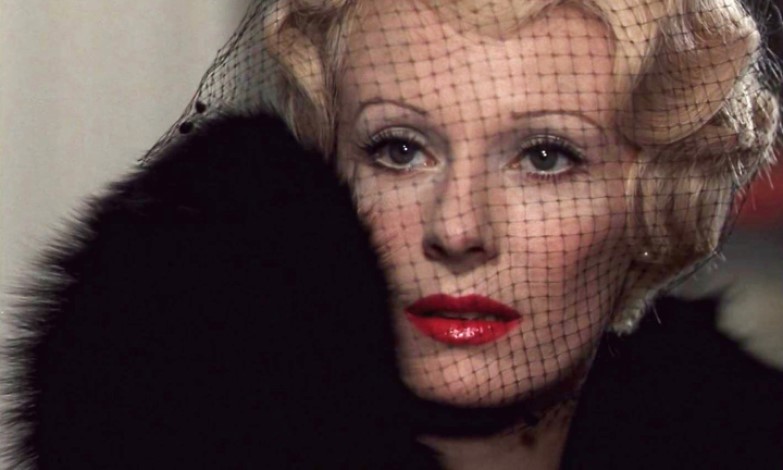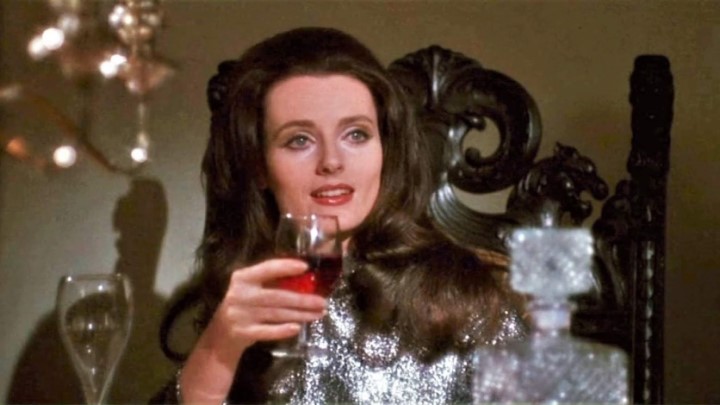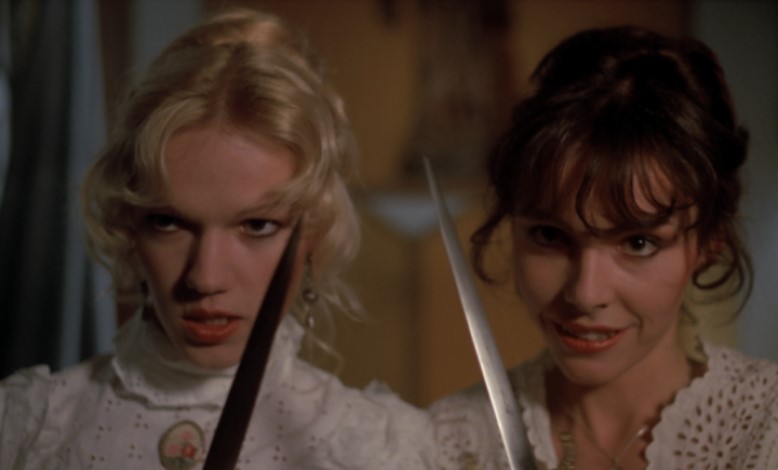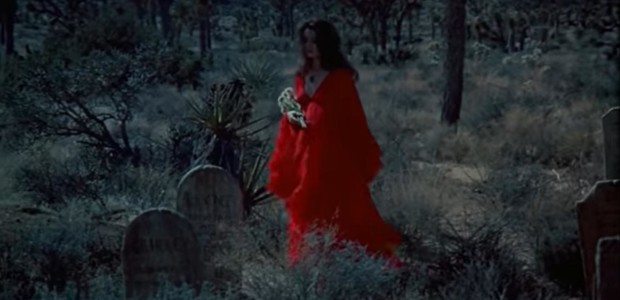In our first installment, we explored some of the earliest examples of lesbian vampire cinema, going all the way back to DRACULA’S DAUGHTER (1936). The archetype gained a bit of momentum during the 1960s, with films like BLOOD AND ROSES (1960) and CRYPT OF THE VAMPIRE (1964) laying the foundation for future adaptations of Joseph Sheridan Le Fanu’s prototypical novella, Carmilla. But nothing could compare to what was ahead with the dawn of a new decade.
In the 1970s, lesbian vampires were the moment. Around twenty films were made between 1970 and 1979. Many cultural factors contributed to the sudden explosion in popularity, but perhaps most important was the loosening of censorship in many European countries regarding sex, nudity, and violence (with some exceptions – for example, Spain’s fascist government meant it had much more stringent censorship laws than, say, France). As a result, most of these films include plenty of blood, breasts, and bush. Some are classier than others, but none are ever more than a stone’s throw away from the gritty world of exploitation film. This works in our favor, since genre cinema’s low-brow reputation and often low-budget status (even films made by comparatively more mainstream studios like Hammer were dismissed as trash by most critics of the day) gave filmmakers freedom to be more creative and transgressive.
However, it must be said that the nature of these films might make them a hard sell for some modern viewers, especially if Twitter is any indication of the current state of media literacy and what qualifies as acceptable queer media. But to write them off as merely “problematic” is a huge disservice – “problematic” is an incredibly vague and useless descriptor anyway. Many of the lesbian vampire’s finest, most exciting moments are from the films on this list (and many that I didn’t have room to include). The traditional elements that Carmilla originated are still present, but they are more frequently challenged, tweaked, and updated to reflect a rapidly changing culture. The bulk of the lesbian vampire’s history is here, and that history deserves much more than to simply be held up against more recent, supposedly progressive media to show how far we’ve come – but more on that in the next installment.
If First Kill was your introduction to lesbian vampires, buckle up, because you’re a long way from Netflix.
*****

THE VAMPIRE LOVERS (1970)
By the end of the 1960s, the UK’s Hammer Studios, who revolutionized horror in the late 50s with their vibrant reimagining of DRACULA and FRANKENSTEIN, was struggling to keep up with the times. Unable to compete with the violence and gore of American horror films due to censorship, Hammer turned their focus to another lucrative selling point on which the censors were less picky: sex. They brought in new blood both behind and in front of the camera and set to work on the film that would define the studio’s (brief) comeback.
That film was THE VAMPIRE LOVERS, a sexy, sumptuous, and surprisingly faithful adaptation of Carmilla. Our titular vampire – a much more mature version of waif-like girl in Le Fanu’s story, played to sensual perfection by Ingrid Pitt – flits from one aristocratic household to the next, befriending, seducing, and slowly draining the life of one beautiful young lady after another. In her wake she leaves a trail of grieving fathers, uncles, and boyfriends, who eventually band together to bring her down.
THE VAMPIRE LOVERS embodied – dare I say perfected – the traditional lesbian vampire narrative structure that Carmilla originated: the lesbian vampire seduces sweet, innocent young women away from their fathers/husbands/other male authority figures; the men then destroy the vampire to restore the patriarchal order and reaffirm their authority over their daughters/wives/etc. The film has been panned by feminist critics over the years as a blatantly sexist male fantasy that no self-respecting lesbian could possibly enjoy, but there is more to the film than just scantily clad ladies (and it’s actually fine for self-respecting lesbians to enjoy the scantily clad ladies, thank you very much) and self-righteous male heroes. Carmilla thoroughly upends the patriarchal order these men hold so dear, exposes their incompetence, and usurps their role as parent, lover, head of household – and she does it all right under their noses. Her ultimate destruction doesn’t define her narrative or negate the pleasure of her escapades. Besides, in true Hammer fashion, she’s soon resurrected for a sequel.

DAUGHTERS OF DARKNESS (1971)
Almost as soon as THE VAMPIRE LOVERS solidified the traditional lesbian vampire mold, other films came along to break it. Belgian filmmaker Harry Kümel’s DAUGHTERS OF DARKNESS is one of them. It is unique among a gaggle of films either directly based on or obliquely inspired by Carmilla, as Kümel draws from another source of lesbian vampire mythology: Countess Elizabeth Bathory, a 16th Century Hungarian noblewoman who allegedly tortured and killed hundreds of young women in order to restore her youth by drinking and bathing in their blood. Recent historians have sought to rehabilitate Bathory’s image and claim that she was framed, but the legend of the notorious Blood Countess is forever ingrained in our cultural psyche.
Kümel’s Countess is elegant and charismatic; she dazzles in her flawless red lipstick and sparkling gowns, the very image of classic Hollywood beauty. She arrives at an off-season seaside hotel and infiltrates the honeymoon of a newlywed couple. Positing the lesbian vampire in direct opposition to the supposedly sacred institution of (straight) marriage – either to expose its flaws or reaffirm its superiority to the vampire’s deviant lifestyle – was a common theme among films of the day. But Valerie and Stefan have problems long before Elizabeth gets her hooks into them. In place of Hammer’s romanticized version of masculine authority, we have a possessive, sadistic, and abusive husband who is harboring secrets of his own. When this is the alternative, who can blame Valerie for falling under the spell of the glamorous Countess Bathory? But Elizabeth stops short of being a liberator; beneath her disarming smiles and soft kisses she is just as cruel as Stefan, and Valerie loses herself in their battle for possession of her.
DAUGHTERS OF DARKNESS is incredibly erotic, beautifully made, and it directly states what we must simply project onto most of these films: the lesbian vampire never truly dies. Elizabeth lives on through Valerie, and Valerie goes on to seduce another couple – continuing the cycle and keeping the legacy of the Blood Countess alive.

VAMPYROS LESBOS (1971)
Welcome to the wild world of Spanish connoisseur of sleaze, Jesús Franco, the most prolific filmmaker of European sexploitation – and one of the most prolific filmmakers of the 20th Century period, with almost 200 films to his credit spanning a nearly sixty-year career. His vast repertoire of films of wildly varying degrees of quality (some people might tell you that they’re all bad, but those people probably just hate fun) covers a wide array of genres and themes, but Franco was most at home with the supernatural and the erotic. And among his best work is VAMPYROS LESBOS.
The film walks us through the rather disastrous bisexual awakening of our sexually frustrated protagonist Linda, who is haunted and aroused by nightly dreams of a mysterious woman who seduces her and drinks her blood. When the law firm she works for sends her to a remote Mediterranean island to settle an inheritance, Linda is shocked to come face to face with the woman of her dreams, Countess Nadine Carody. Linda’s dreams soon become reality, and she finds herself torn between the safety and familiarity of the world she knows and the strange, dark pleasures that Nadine offers.
Rather than go the obvious route by aligning the film with Carmilla, Franco instead draws inspiration from that other classic vampire novel, Dracula (1897), which he had adapted more faithfully once before. Yet despite the intentional callbacks to literature, Franco also deliberately rejects most traditional Gothic motifs. Instead of being confined to the night, Nadine sunbathes on the beach and skinny dips in the sea, and she lives in a hip, vibrantly decorated flat rather than a ruined castle. All of this combined with the psychedelic score makes VAMPYROS LESBOS a very modern film…for its time, at least. There are too many negative connotations attached to the word “dated,” but the film is definitely a time capsule of the specific cultural moment during which it was produced – and that is a huge part of its enduring charm.

THE VELVET VAMPIRE (1971)
Of all the films made during the lesbian vampire’s heyday, THE VELVET VAMPIRE stands out for two main reasons: it’s an American film, and it was directed by a woman. A progeny of b-movie king Roger Corman, Stephanie Rothman only directed a handful of films before leaving the industry, but her legacy cannot be understated. She was one of very few women helming genre films at the time and she used her medium to subvert sexist tropes, weave in social commentary, and make her exploitation films, well, a little less exploitative. Celeste Yarnall, who starred in THE VELVET VAMPIRE, said that the film was her first experience with a female director and remarked that, compared to male directors, Rothman was especially sensitive in her handling of sex scenes.
Yarnall plays Diane LeFanu (see what they did there), a vampire who shares Nadine Carody’s affinity for sun. And like Countess Bathory in DAUGHTERS OF DARKNESS, she sets her sights on a married couple. But these aren’t tender newlyweds; for Lee and Susan the honeymoon is long over. Lee isn’t abusive like Stefan, but he is apathetic and insensitive. He blatantly flirts with Diane in front of Susan and expects her to be okay with his infidelity but becomes angry when Susan also welcomes Diane’s advances. Of course, Diane plans to do more than just seduce the couple, and Lee and Susan find themselves stranded in Diane’s secluded desert home, unaware that they may not make it out alive.
The number of women behind the camera in genre cinema has increased tremendously since the 1970s, and today Rothman is hailed as a trailblazer. Sadly, women filmmakers are still a minority when it comes specifically to lesbian vampires, making the few films that are made by women a little extra special. THE VELVET VAMPIRE stands as an early example of how these narratives can be handled differently when a woman is telling the story, even if the film ultimately bows to the genre conventions of its time.

FASCINATION (1979)
Jean Rollin probably made more lesbian vampire films than any other single filmmaker. His films are usually either praised as poetic, magical, brilliant, or dismissed as pure sleaze. Maybe there’s a little truth in both views, since Rollin was both an avid student of the fantastique – a French literary tradition (and later cinematic genre) that exists at the intersection of horror, fantasy, and science fiction – and a director of hardcore porn. But to say that his work lacks substance is to miss the point. Rollin’s films are whimsical tales of sex and death, the two most important themes of any good vampire story. The languid pacing, the (sometimes very) loose narrative structure, and the general strangeness present throughout his repertoire might not be everyone’s cup of tea, but there is something beautiful about Rollin’s work that is unique to him alone.
The film most recommended to Rollin newbies is FASCINATION as it is perhaps his accessible film, with a tight and relatively cohesive narrative. After double-crossing his band of thieves, Marc goes on the run and takes refuge in a château he expects to be abandoned, only to find it inhabited by two lovely ladies, Eva and Elisabeth. The women are amused by Marc’s attempts to intimidate and overpower them, and they tease him with cryptic clues about a gathering to take place after dark. When night finally comes, a group of women arrive for an “annual reunion,” and Marc finds himself the center of attention, blissfully unaware that he isn’t so much the guest of honor as he is the main dish of the midnight feast. The party culminates in a bloody mess of jealousy, desire, and betrayal, as Elisabeth must decide where her loyalty lies.
FASCINATION could be considered an early progenitor of the vampire girl gang, a trope that is highly popular in modern vampire media, queer or otherwise. But what makes it particularly unique is that the film’s vampires aren’t vampires at all, at least in the supernatural sense. These women are mere humans – respectable, otherwise normal humans – who tasted blood and developed an unquenchable thirst. This makes their transgression even more damning (and delicious). The vampires in all the other films on this list drink blood because they need it to survive – the women of FASCINATION do it simply because they want to.
*****
In the third and final installment of this series, we’ll cover some of the most recent lesbian vampire films and explore how the archetype has evolved in the 21st century.



No Comments